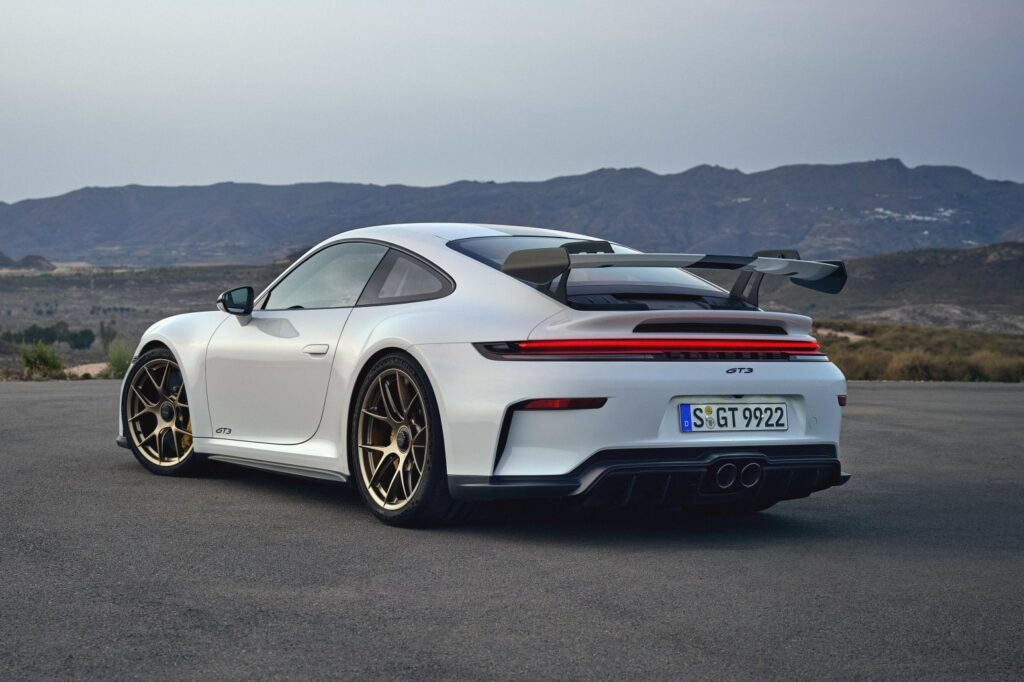The iconic 503 hp (375 kW) naturally aspirated flat-six engine in the Porsche 911 GT3 might only have two years left on the market before succumbing to stricter emissions regulations, according to Porsche GT boss Andreas Preuninger.
This 4.0-litre powerhouse has propelled the GT3 since its introduction in the 2018 991.2 generation and also serves duty in various tunes within the 911 S/T, 911 GT3 RS, 718 Cayman GT4 RS, and 718 Spyder RS. Notably, it’s one of only two Porsche engines remaining without forced induction or electrification. The other is the closely related 4.0-litre flat-six found in the 718 Cayman GTS 4.0 and 718 Boxster GTS 4.0.
Mr Preuninger suggests the latest 911 GT3 (992.2) could mark the final hurrah for this free-breathing masterpiece. The reason? Its current form struggles to meet tightening emissions standards, particularly the upcoming Euro 7 regulations coming into effect in 2026.
“It could live forever without the laws coming,” Preuninger told Autocar, referencing the new standards. “I don’t think we can handle Euro 7 without electrification or without turbos. [As it stands] we can sell this car for another two years, but it depends on the markets.”
One potential solution involves adopting a variation of the new hybrid system used in the 911 GTS. This system combines a 3.6-litre turbocharged engine with a gearbox-mounted electric motor for a total output of 473 hp (353 kW). While rivals like Lamborghini and Ferrari have embraced turbocharged or hybrid powertrains, Preuninger emphasizes the distinct purposes of the GT3 compared to the GTS.
“For the GTS, this is a great [set-up],” he says. “In straight-line performance, it’s as fast as a GT3 and maybe even quicker off the line. But for a GT3, a straight is the connection between two curves.”
Only time will tell what the future holds for the naturally aspirated heart of the Porsche 911 GT3.

